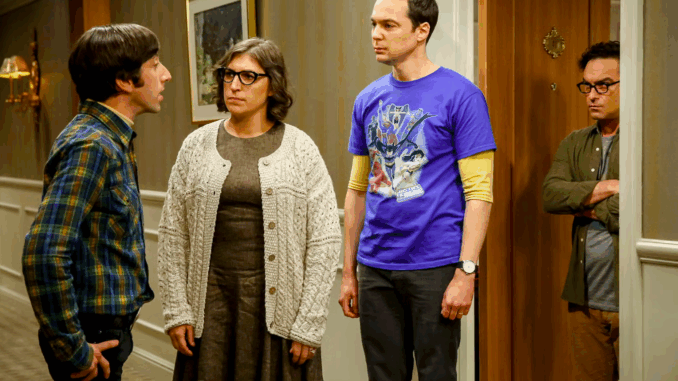
After 12 years of mystery, the broken elevator is finally explained — and it’s more than just a mechanical metaphor
In the series finale of The Big Bang Theory, titled “The Stockholm Syndrome” (Season 12, Episode 24), the show gives its fans an emotional, funny, and satisfying farewell. But beyond the Nobel Prize celebrations and goodbyes, there’s one surprising moment that perfectly encapsulates the entire journey: the elevator finally works.
Yes, after 12 seasons of characters climbing up and down the stairs, often with groceries, pizzas, or awkward silences in tow, the elevator is suddenly fixed. While it’s a blink-and-you’ll-miss-it moment, it’s also deeply symbolic — a mechanical metaphor for growth, persistence, and resolution.
The Moment: Penny’s Surprise Discovery
The reveal is subtle. Penny, now pregnant (though not yet telling everyone), walks into the apartment building as usual, heading for the stairs. But as she approaches, the elevator doors ding open. There’s no fanfare, no dramatic music. Just one simple surprise.
Her face says it all — confusion, wonder, and maybe a bit of “finally.” It’s the kind of moment that makes longtime viewers sit up and grin. After years of wondering why it was broken, after hundreds of jokes and lazy stair climbs, it just works.
Later, Leonard and Sheldon get inside the elevator, and when the doors close and the ride begins, Sheldon flinches — as if still expecting it to malfunction. It’s a beautiful mix of comedy and character insight. Even as things improve, Sheldon’s instinct is to anticipate chaos.
Why It Matters: A Symbol of Stuckness and Growth
The broken elevator was never just a gag. For over a decade, it represented the static, repetitive nature of the characters’ lives. The climb up the stairs mirrored their slow, awkward climb toward maturity, relationships, and connection.
For Sheldon in particular, those stairs symbolized his resistance to change. He liked things how they were. Predictable. Controlled. As he walked up those stairs for years, we saw his reluctance to evolve — emotionally, socially, and romantically.
So when the elevator is finally repaired, it signals something bigger: things have changed, and that’s okay. The characters have grown up, moved on, and healed. It’s closure — not just for the machinery, but for the soul of the show.
The Finale: Big Wins and Subtle Goodbyes
Of course, the episode is more than just the elevator. Sheldon and Amy win the Nobel Prize in Physics for their work on super-asymmetry. Their speeches are heartfelt, and Sheldon, ever the narcissist, stuns everyone by putting his friends first.
In a tearjerking moment, he calls out Leonard, Penny, Howard, Bernadette, Raj, and Amy — thanking them for their support and patience. For a man who once struggled to grasp social cues, it’s the culmination of his entire journey.
Meanwhile, Leonard and Penny’s pregnancy announcement (which they only tell Sheldon after the speech) provides a fitting next step for the couple who started out mismatched and grew into something solid.
Raj? He ends up going to the Nobel ceremony with Sarah Michelle Gellar. No, really. It’s bizarre and hilarious and somehow perfect for him — the eternal romantic who never stopped dreaming.
The Elevator as Emotional Architecture
The genius of “The Stockholm Syndrome” lies in its layered storytelling. It gives big payoffs, like the Nobel Prize and pregnancy twist, but also small ones — like fixing the elevator. That act might seem trivial to someone who hasn’t followed the show, but to long-time fans, it’s a closing chapter to one of the show’s quietest but most enduring jokes.
And perhaps, in a way, it’s also a metaphor for the audience. After twelve seasons, we too have climbed those stairs alongside Sheldon and the gang. We’ve watched them fail, fall, grow, and win. We’ve laughed at their quirks and cringed at their flaws. And just like that elevator, we’ve been waiting — not for it to work, but for everything to finally click.
Final Thoughts: A Quiet Goodbye with a Loud Legacy
The Big Bang Theory didn’t end with a bang — it ended with a ding. A simple elevator bell that signaled everything had come full circle. While not as flashy as a wedding or a breakup or a death, that quiet moment said something profound:
The journey is over. And it mattered.
In fixing the elevator, the show acknowledged its own past and gave its characters — and its audience — permission to move on. And sometimes, that’s the most powerful ending of all.

